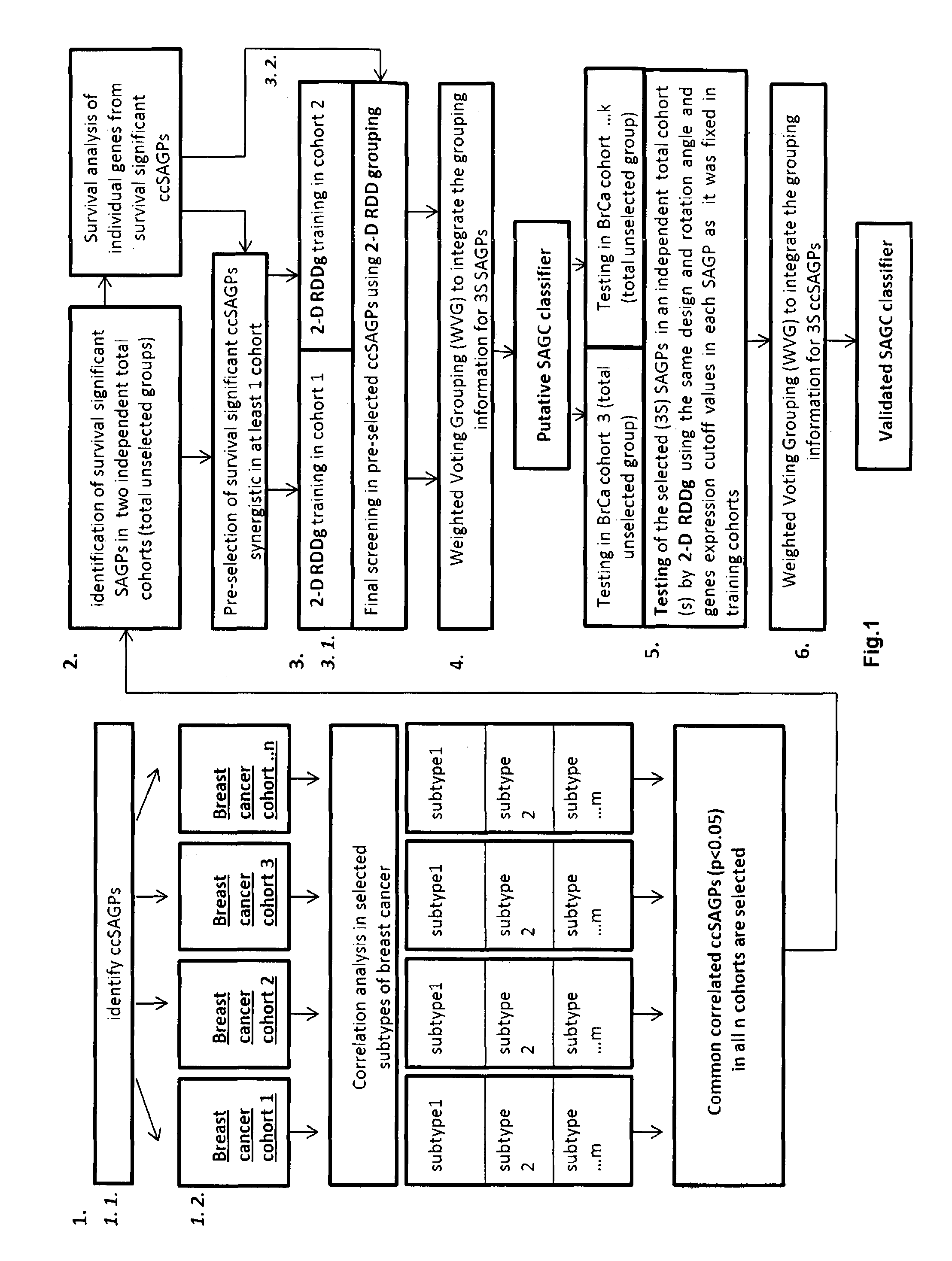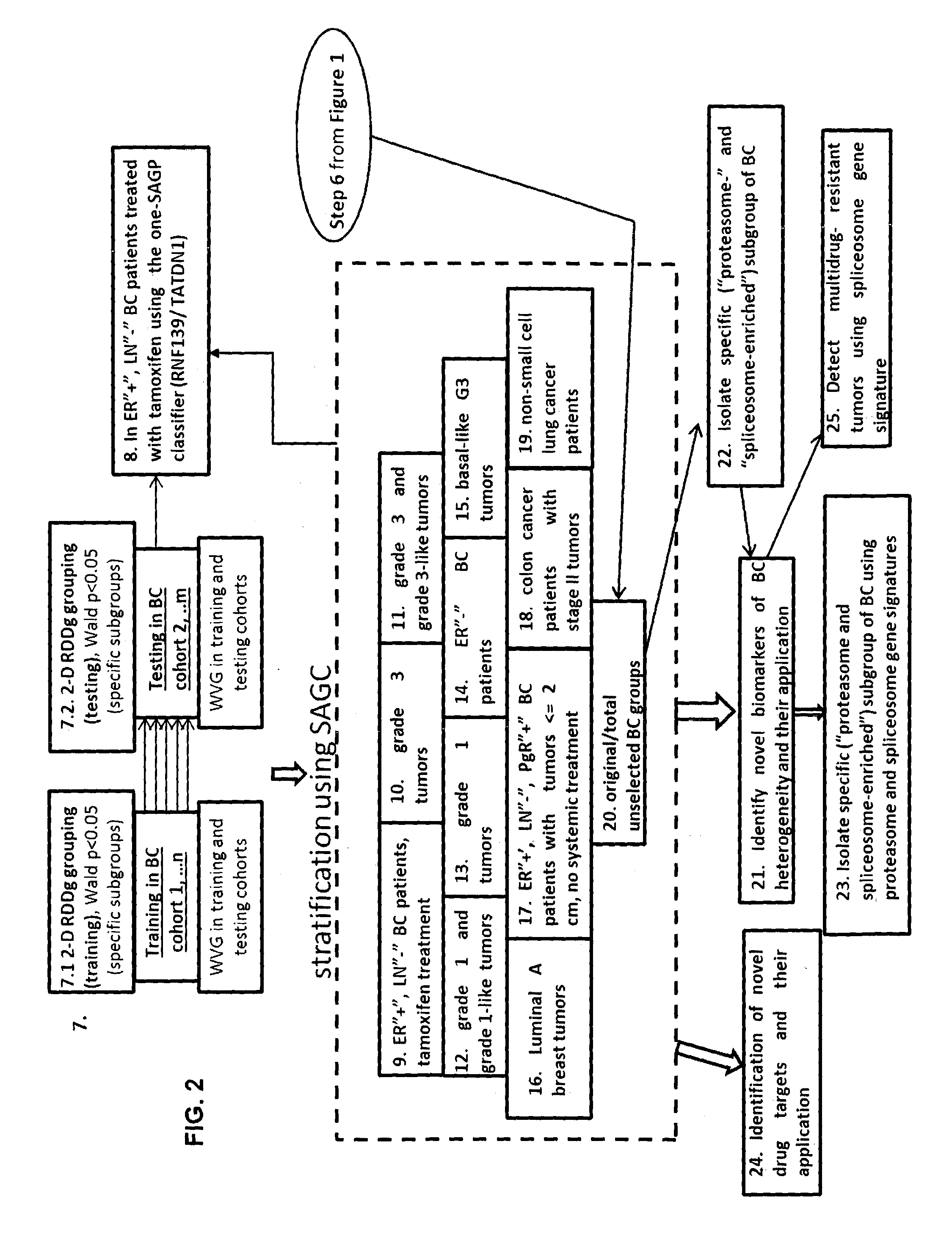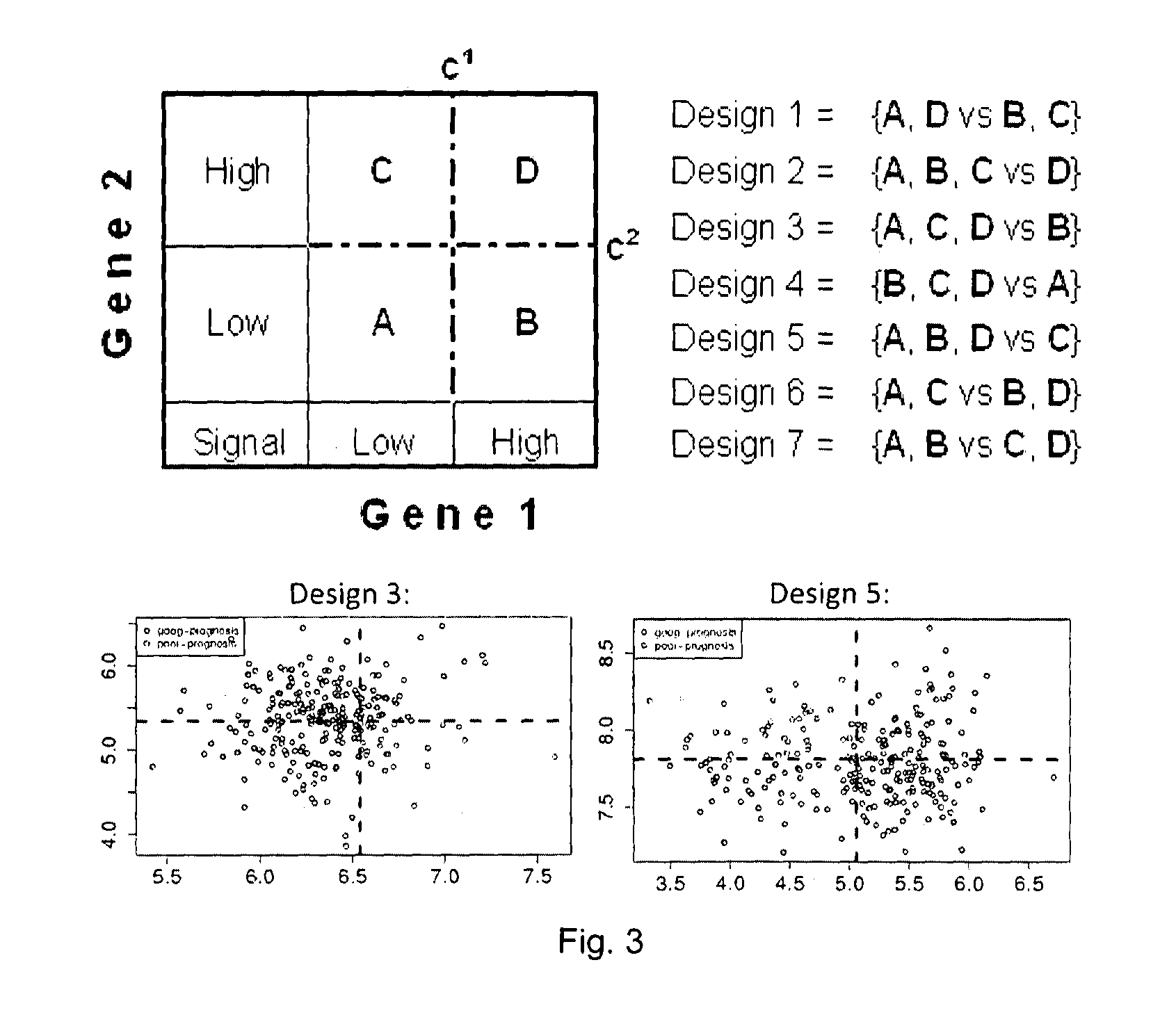Sense-antisense gene pairs for patient stratification, prognosis, and therapeutic biomarkers identification
a technology of patient stratification and anti-sense, applied in the field of sense-antisense gene pairs for patient stratification, prognosis, and therapeutic biomarkers identification, can solve the problems of cognitive impairment, low efficiency of currently used chemotherapy schemes, and high risk of long-term toxic side effects for all treated (and often over-treated) patients
- Summary
- Abstract
- Description
- Claims
- Application Information
AI Technical Summary
Benefits of technology
Problems solved by technology
Method used
Image
Examples
Embodiment Construction
[0104]FIG. 1 shows the steps of a computational method for generating a SAGC classifier according to embodiments of the invention. The steps are explained below, and we simultaneously explain an example which implements the steps.
[0105]Herein, we deal with but one essential subclass of SAGPs in which each gene-partner can encode a protein (coding-coding SAGPs-ccSAGPs). The genes of ccSAGPs are highly populated in the genome, relatively higher expressed in cancer cells and better annotated than other classes of SAGPs (non-coding-coding or non-coding-non-coding SAGPs). Besides, in ccSAGPs expression patterns of both genes-partners could be mutually regulated effecting the levels of their protein products with presumably stronger combined impact for the cells fate.
[0106]A first step (step 1 in FIG. 1) is the isolation of ccSAGPs relevant to a medical condition, such as cancer or breast cancer. Based on public literature analysis and our own previous studies, we suggested that ccSAGPs i...
PUM
| Property | Measurement | Unit |
|---|---|---|
| size | aaaaa | aaaaa |
| survival time | aaaaa | aaaaa |
| angle | aaaaa | aaaaa |
Abstract
Description
Claims
Application Information
 Login to View More
Login to View More - R&D
- Intellectual Property
- Life Sciences
- Materials
- Tech Scout
- Unparalleled Data Quality
- Higher Quality Content
- 60% Fewer Hallucinations
Browse by: Latest US Patents, China's latest patents, Technical Efficacy Thesaurus, Application Domain, Technology Topic, Popular Technical Reports.
© 2025 PatSnap. All rights reserved.Legal|Privacy policy|Modern Slavery Act Transparency Statement|Sitemap|About US| Contact US: help@patsnap.com



